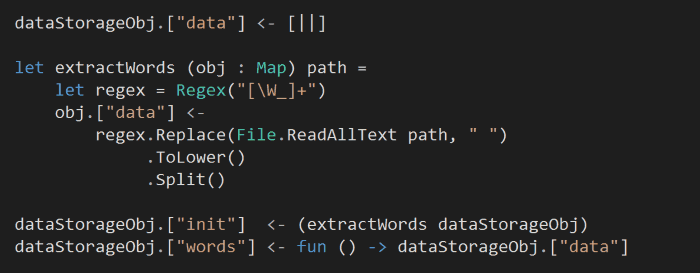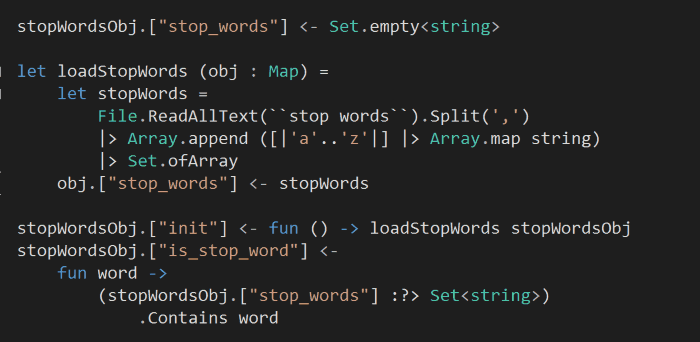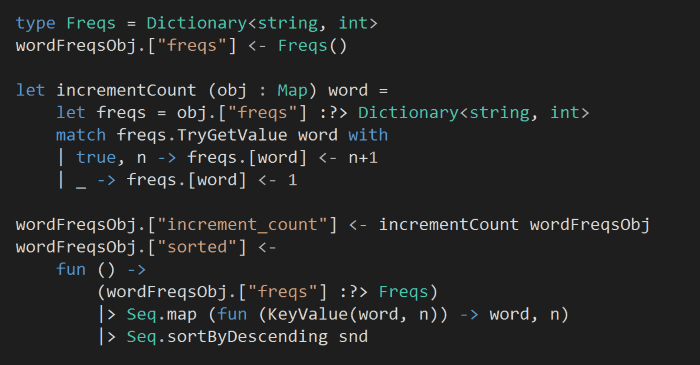
Yan Cui
I help clients go faster for less using serverless technologies.
NOTE : read the rest of the series, or check out the source code.
If you enjoy reading these exercises then please buy Crista’s book to support her work.
Following on from the last post, we will look at the Closed Maps style today.
Style 12 – Closed Maps
Constraints
- Larger problem is decomposed into things that make sense for the problem domain
- Each thing is a map from keys to values, some values are procedures/functions
- The procedures/functions close on the map itself by referring to its slots
Does the constraints sound a bit like Javascript? It should, because this style is also known as prototypes.
First, let’s define what a Map constitutes to in our solution and the three things we need:

Then let’s add to the dataStorageObj map (this is analogous to the DataStorageManager in the Things and Letterbox styles). Here we’ll map the “init” key to a function that extracts the words from the specified path and stores the result as a string[] in the “data” key.

Next, let’s do the same for the stopWordsObj map:

and the wordFreqsObj map:

Finally, we need to initialize both dataStorageObj and stopWordsObj maps (notice that we need to first cast each value to a function signature and then invoke it with an argument, pretty ugly…):

and then count anything that’s not a stop word, and print the top 25:

These last couple of lines should be encapsulated into another map that’s analogous to the WordFrequencyController in the Things style. The reason I didn’t do this was because I wanted to stay faithful to Crista’s example where she chose not to for some reason.
Whilst this was another interest twist to the OOP paradigm that we (as .Net developers) are used to, like the Letterbox style it’s also very much at odds with how one would idiomatically approach thing in F#. As a style, we also didn’t get a chance to explore other possibilities that often come with this style – namely prototypal inheritance and monkey patching.
You can find the source code for this exercise here.
Whenever you’re ready, here are 3 ways I can help you:
- Production-Ready Serverless: Join 20+ AWS Heroes & Community Builders and 1000+ other students in levelling up your serverless game. This is your one-stop shop for quickly levelling up your serverless skills.
- I help clients launch product ideas, improve their development processes and upskill their teams. If you’d like to work together, then let’s get in touch.
- Join my community on Discord, ask questions, and join the discussion on all things AWS and Serverless.


Pingback: F# Weekly #2-#3, 2016 | Sergey Tihon's Blog